This is your free Rome City Guide! Rome is one of the oldest cities in the world, and large parts of that history are still visible today. You’ll enjoy ancient temples, good food, bustling piazzas and more churches than you’ve ever seen in your life. Here are our recommendations of what to see…
WHAT TO DO IN ROME
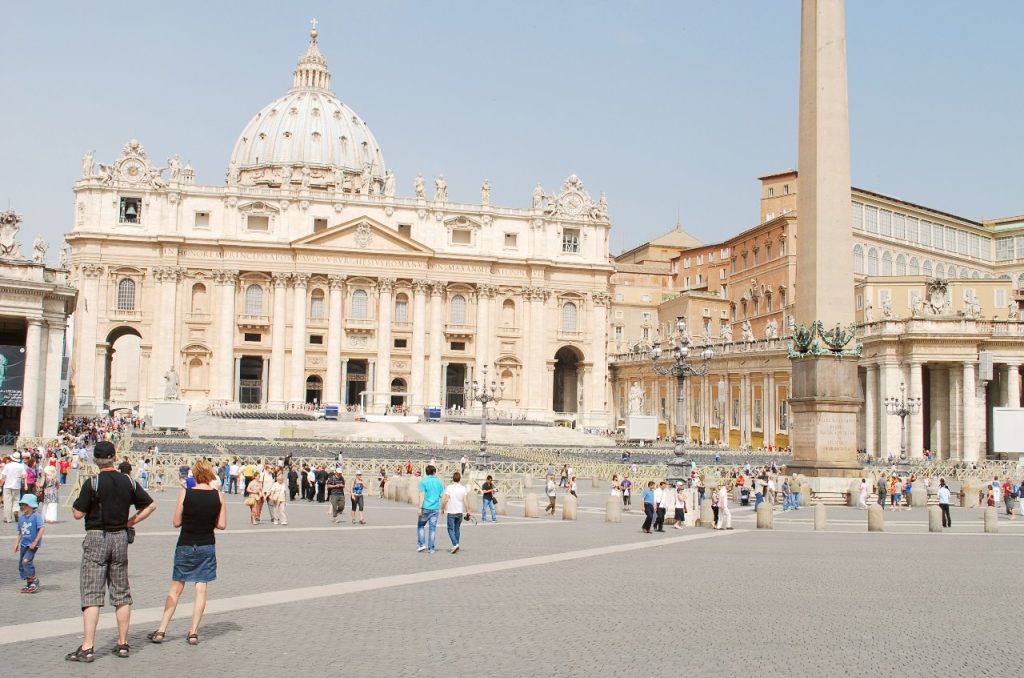
St Peter’s Square (Piazza San Pietro) – You’ll have seen this open space in Vatican City many times on TV but to be there, surrounded by people, is a real experience. It’s not unusual to find some kind of service or ceremony in the piazza, but even if there’s nothing particularly going on, it’s a lovely place to sit and watch the world go by. The oval lines of columns around the outside lead to the vast St Peter’s Basilica which looks out onto the open space. There are two water fountains and a central obelisk in the piazza too.
St Peter’s Square: Read More, Pictures & Map…
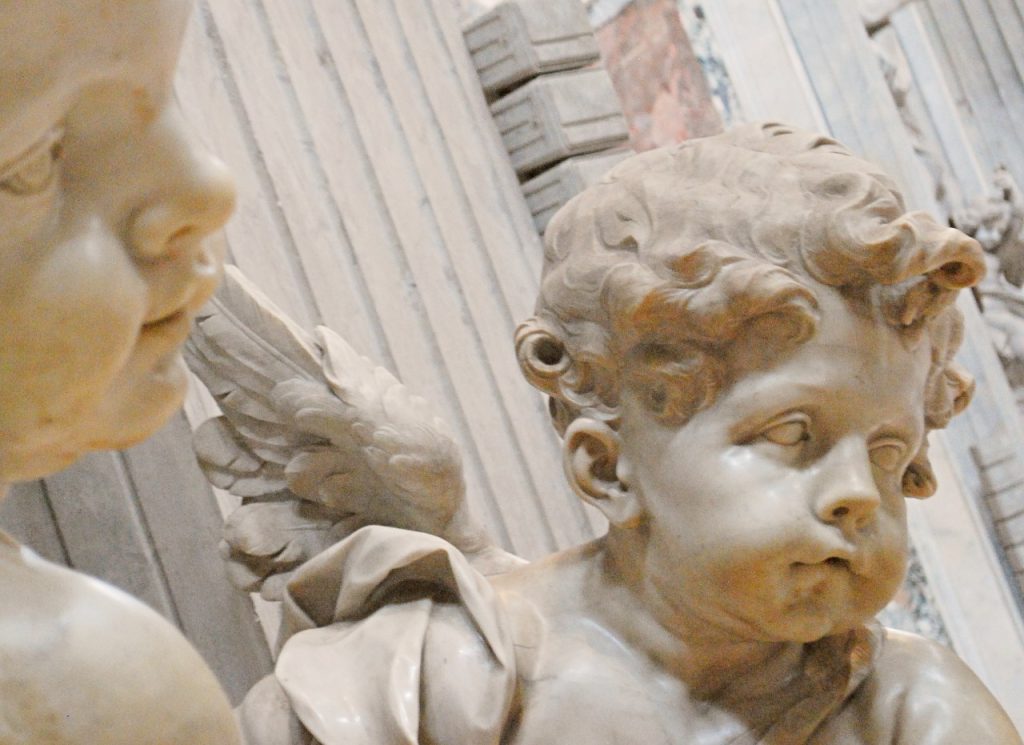
St Peter’s Basilica (Basilica di San Pietro) – This is one of the world’s most important churches and it has all the finery to prove it. The sheer size of the Basilica is the first thing that blows you away and then you start to marvel at the ornate decoration, beautiful statues, stunning chapels, works of art and memorials to former popes. Michelangelo designed the massive dome on the roof which you can see across most of central Rome, whilst Carlo Moderno came up with the façade, which looks more like a palace than a church.
St Peter’s Basilica: Read More, Pictures & Map..
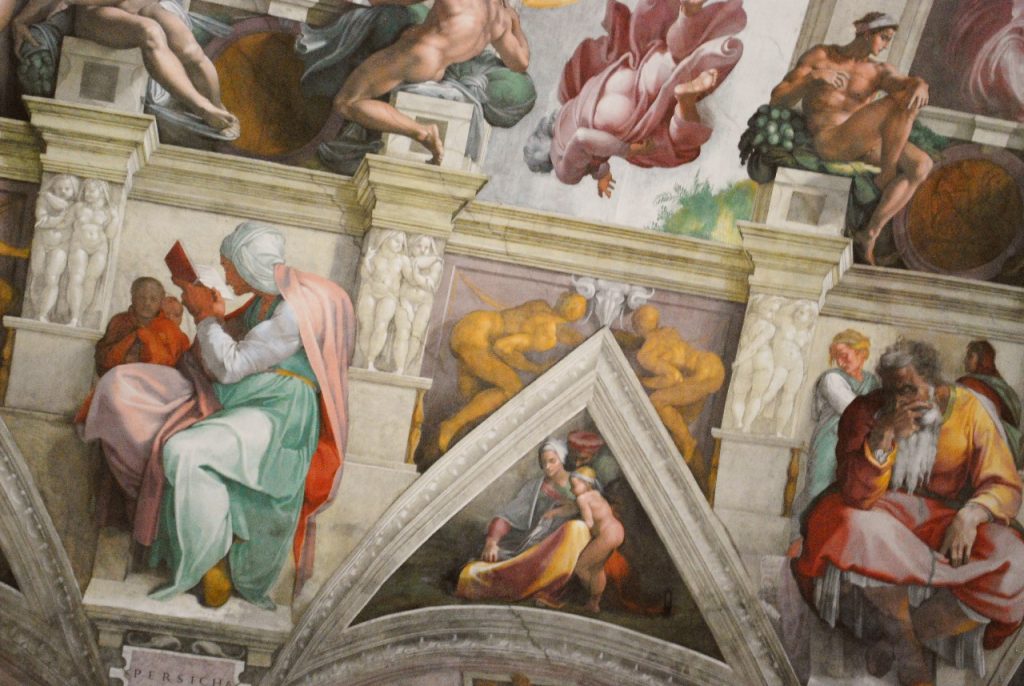
The Vatican Museums & Sistine Chapel (Musei Vaticani & Cappella Sistina) – No trip to Rome would be complete without seeing the Sistine Chapel, but you can only do this by visiting the Vatican Museums. The museum complex is absolutely huge and you could easily spend all day in there. There’s so much to see that it’s actually hard to take it all in. You will see corridor after corridor of art, sculptures, ornate details and more. It has to be seen to be believed but is at times overwhelming.
The Vatican Museums & Sistine Chapel: Read More, What To See, Pictures & Map…
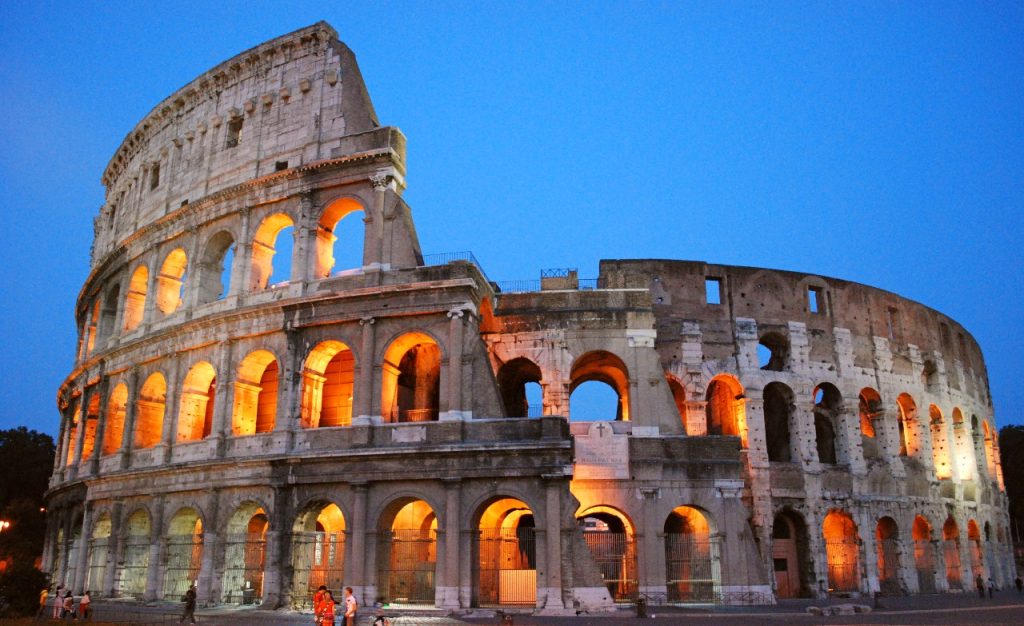
The Colosseum (Colloseo) – It’s another icon of Rome and one of the most impressive ancient structures you’re ever likely to see. Sadly, part of the outer walls fell down in an earthquake, but there’s still plenty left to get a feel for what the Colosseum would have been like in the days of the Gladiators. We think the building is most impressive on the outside, but it’s still worth a trip inside too. 55,000 Romans would have squeezed into the arena and when you’re inside you can see how they would have all fitted in.
The Colosseum: Read More, Ticket Prices, Pictures & Map…
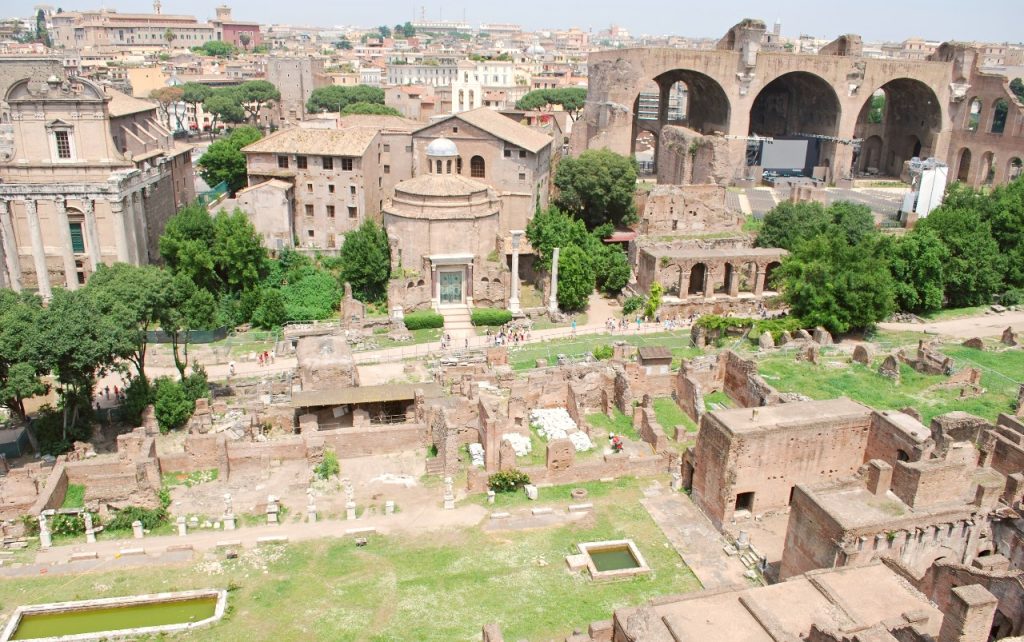
The Roman Forum (Foro Romano) – Across from the Colosseum you’ll find the rest of the ruins of Ancient Rome. You’ll find the ruins of temples, basilicas, palaces, houses, gardens and even a brothel! We liked the view from the greener Palatine Hill down onto the main Forum. Check your ticket if you’ve been to the Colosseum as admission is usually included to the Forum and Palatine area too.
The Roman Forum: Read More, Pictures & Map..
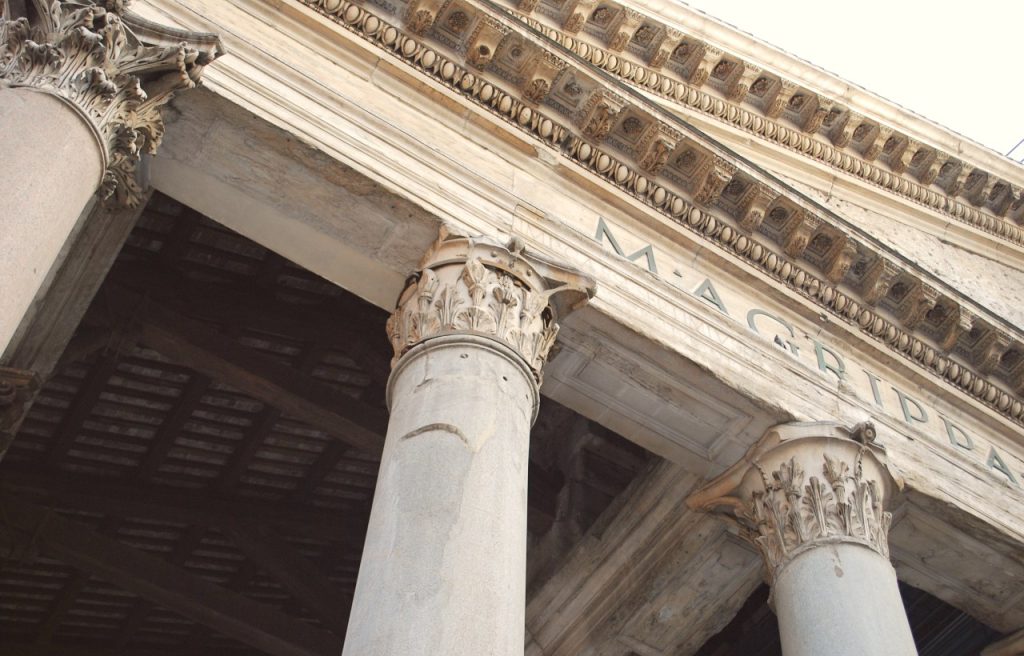
The Pantheon – Dating back to the first century AD, this former Roman temple is probably the oldest still used building you’ll ever have been in. It’s certainly the best preserved Roman building in Rome, partly because it was converted into a church by a Pope in around 609AD. Outside, the building shows its age with a huge stone canopy and ancient brickwork, but inside you get the full view of the magnificent dome. The building is lit by a single portal opening in the roof which lets in an amazing amount of light.
The Pantheon: What To See, Opening Times & Map…
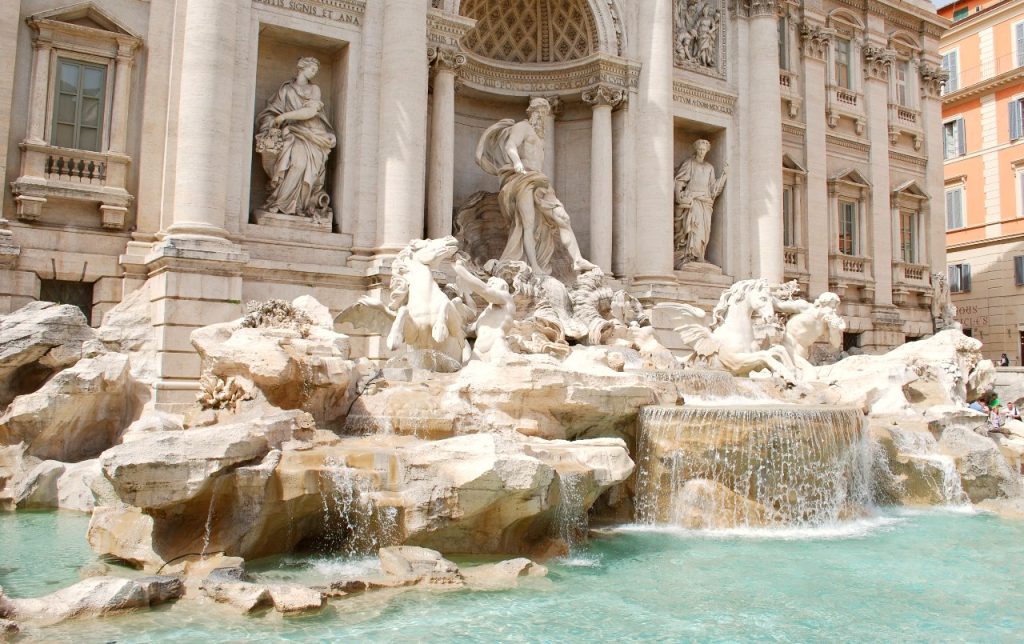
Trevi Fountain (Fontana di Trevi) – Without doubt this is Rome’s best water feature and it draws a huge crowd day and night. It dates back to 1762 and shows Neptune flanked by two horses. The water gushes with so much force that sitting on the edge of the feature will get you quite wet!
Trevi Fountain: Read More, Pictures & Map…
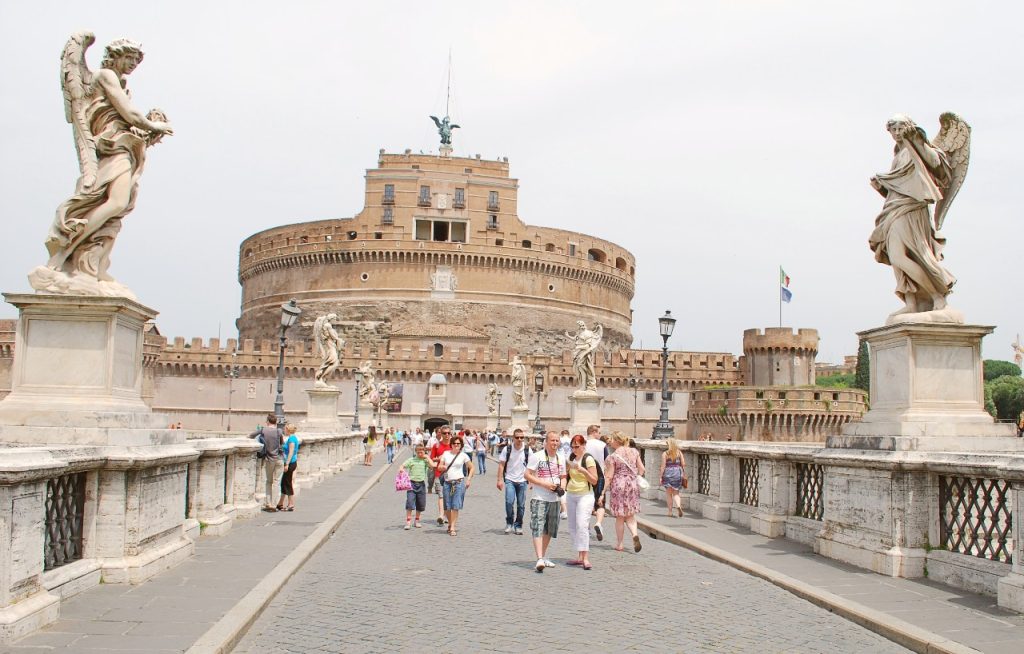
Castel Sant’Angelo – This castle sits alongside the River Tiber and the central part of it was originally constructed as the mausoleum for the Emperor Hadrian, but was converted by a Pope into the defensive fortress you see today. Inside, you enter up the original Roman passageway that Hadrian’s body would have been taken along, but the newer parts of the building contain beautifully decorated ornate papal apartments, courtyards, passageways and ramparts.
Castel Sant’Angelo: Read More, Ticket Prices, Hours & Map..
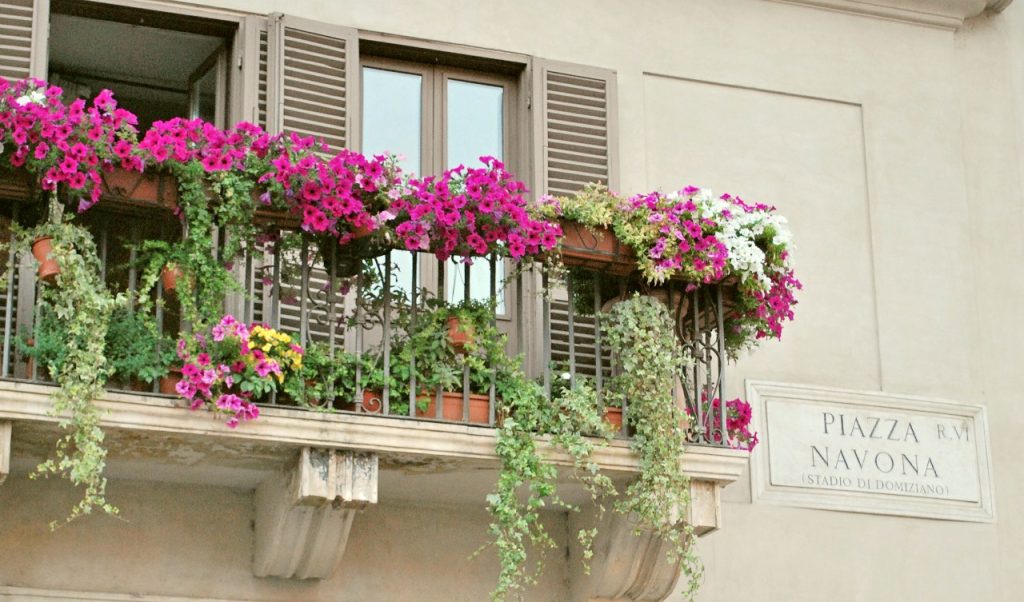
Piazza Navona – Almost 24 hours a day, this piazza is the heart of Rome’s social life. There are several routes into the piazza, and all offer striking views of the Bernini water fountain at the centre which was featured in Dan Brown’s Angels & Demons book. Cafe’s surround the edge of the open space and the centre is filled with street entertainers, artists and musicians. We loved it here – there was a relaxed and friendly atmosphere and it’s a beautiful place to while away some time.
Piazza Navona: Read More, Pictures & Map…
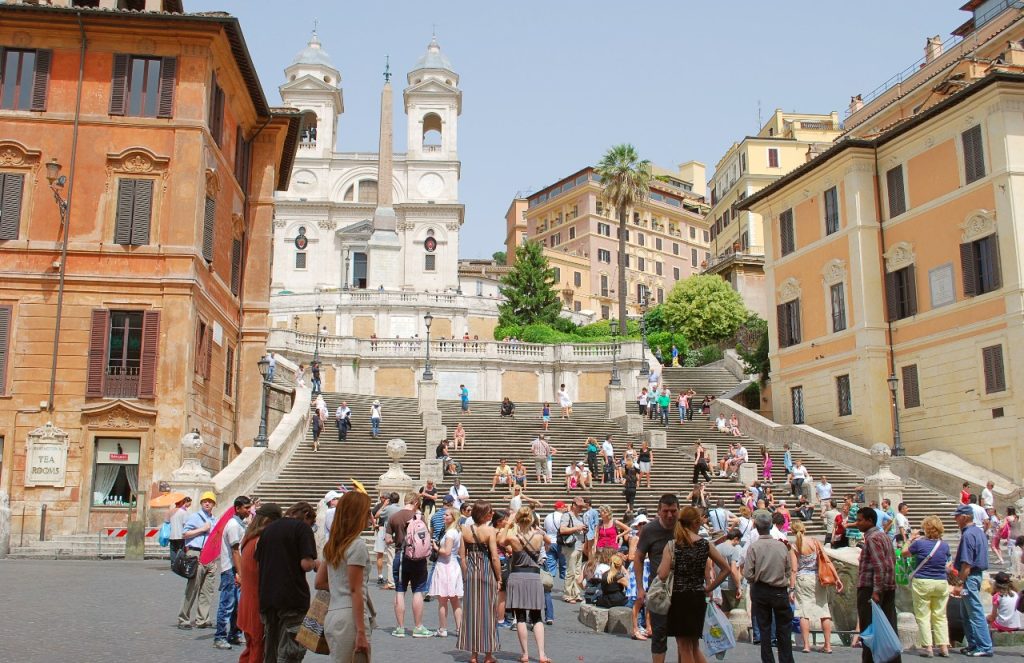
Piazza di Spagna – This piazza is home to the Spanish Steps, one of the tourist spots of Rome. The steps were designed in 1720 to connect the piazza to the church up the hill of Trinita dei Monti and many claim the are the longest and widest set of steps in Europe. Today the steps are usually covered with tourists, but the piazza is a also meeting place for locals, a popular location for street sellers and a starting point for Rome’s horse and trap rides.
Piazza di Spagna: Read More, Pictures & Map…
ROME MINI GUIDES
There’s so much more to see in Rome that we’ve created the mini-guides below for the best bits.
See our mini-guide to: ROME’S BEST CHURCHES
See our mini-guide to: ROME’S BEST PIAZZAS
See our mini-guide to: ROME LOCATIONS IN ANGELS & DEMONS
OUR TOP TIP IN ROME
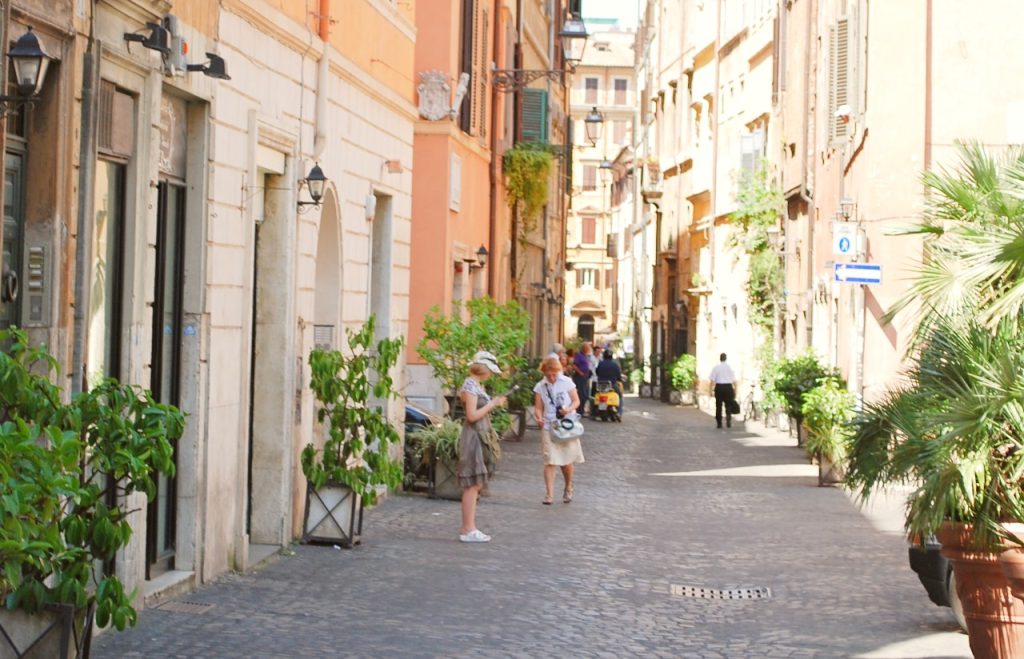
Rome’s Secret Streets – They say the population of Rome doubles during the daytime, but even with so many tourists there are some truly lovely streets and piazzas that remain fairly quiet. Our top tip for you is to spend a bit of time wandering around these areas, soaking up the simple beauty of the city. Our favourites are Via del Coronari near Piazza Navona, Piazza d. Pietre near Templo Adriano and Via Aquiro near Palazzo Chigi (the Prime Ministers house), but there are many more you can discover just by walking off the beaten track a little.
Rome’s Secret Streets: Read More, Pictures & Map…
MORE THINGS TO DO IN ROME
RECOMMENDED HOTEL
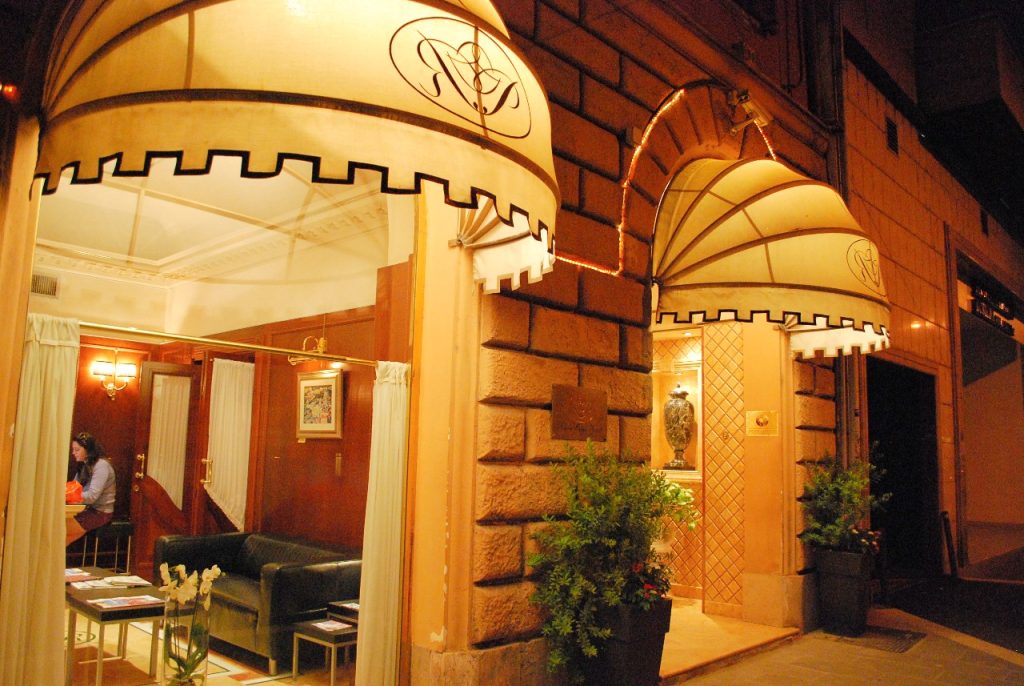
We stayed at the 4* River Palace Hotel located near Piazza del Popolo in the northern bit of the city centre of Rome and we would thoroughly recommend it. It was beautifully decorated, immaculately clean and there was great customer service. Most attractions were within walking distance although we used the Metro for the Colosseum and occasionally for Vatican City. The only quibble was that the classic rooms are rather small, but how much time do you spend in your room in a city like Rome?
GETTING AROUND ROME
Rome has busses, trams and a two line underground Metro system. We found the Metro easy to use for journeys that were too far to walk. You buy your ticket from the machines in stations which have an option for English. Journeys anywhere were only 1.5 Euros (2024 prices). You may choose to take a hop on, hop off tour bus too, although they’re quite expensive for what they are. Many of the tickets last 24 or 48 hours so you can use them for the tour one evening and then to get around the next day. This map shows the location of the Colosseum but you can move it around to see other locations and accommodation options…
Getting from the airport is best done by train. There are services from both of Rome’s main airports to the massive Termini Station. We tried 2 alternatives from Fiumicino Airport. Going into Rome we took the shuttle bus with got stuck in Rome’s traffic and took well over an hour, but was cheaper. Going back we took the Leonardo Express from Termini costing a few Euros more but with a journey time of 30 minutes. There are however lots of other transfer options here: Rome Airport Transfer Options
MORE ON ROME
More Things to Do In Rome – Top sightseeing tours and bookable activities
Rome Hotels – Great rates from Hotels.com
Guide Books on Rome – Amazon
